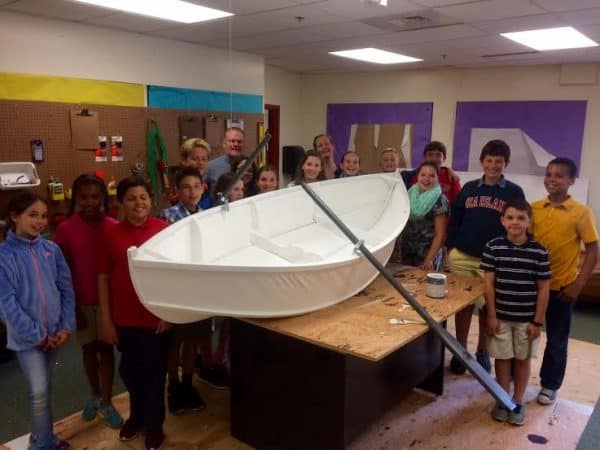Here is a pair of videos from the Brookwoods Middle School of Manchester, MA, showing 4th and 5th graders building, from scratch, one of the Ned McIntosh-designed canvas dinghies—with a little help from their instructors, especially from Sven Holch whose ida it was to pursue the project. In an endeavor like this, the kids learned how to do all kinds of things, using both their hands and their heads, as they created a boat they can use afterwards.
. . . sign up to the right to get immediate access to this full post,
plus you'll get 10 of our best videos for free.
Get Free Videos& Learn More Join Now!!for Full Access Members Sign In



James Howard Means II says:
Maynard,
Howard Means, Waldo’s son-in-law here. I was intrigued by your “Flotsam” article concerning the canvas boats of Ned McIntosh. I immediately recalled a wonderful cruise with Charlie and Kin Howland aboard my Cape Dory 30 MotorSailor many years ago. We towed the last remaining Howland canvas boat. I wasn’t aware that she was built in Waldo’s living room.
As I recall we had 3 of our children in addition to three of us aboard so we decided to tow two dinghies. Separately I am sending a photo of the last remaining Howland canvas boat on a beach at Head of the Harbor on Nantucket. The boat in the foreground is my Cape Dory 10 which I still have here in Florida at our retirement home. As you may recall I worked many years at Cape Dory for many years. The canvas boat was lost in the middle of Buzzards Bay when here painter failed. I was luckily not aboard.